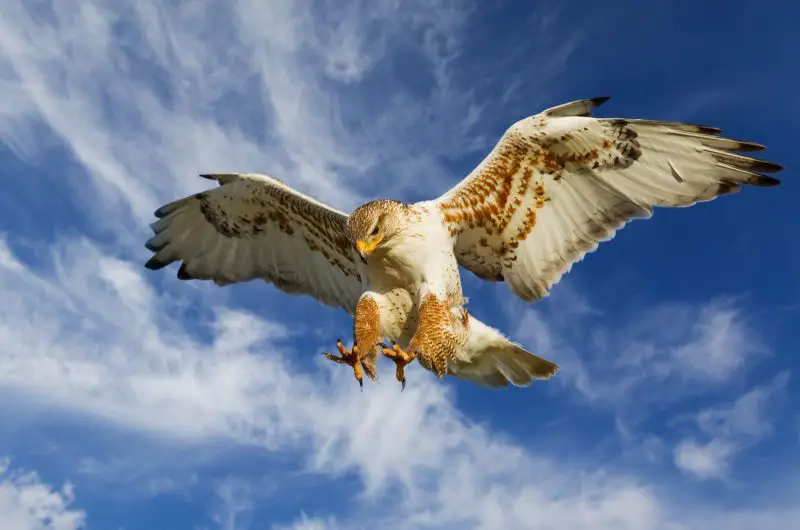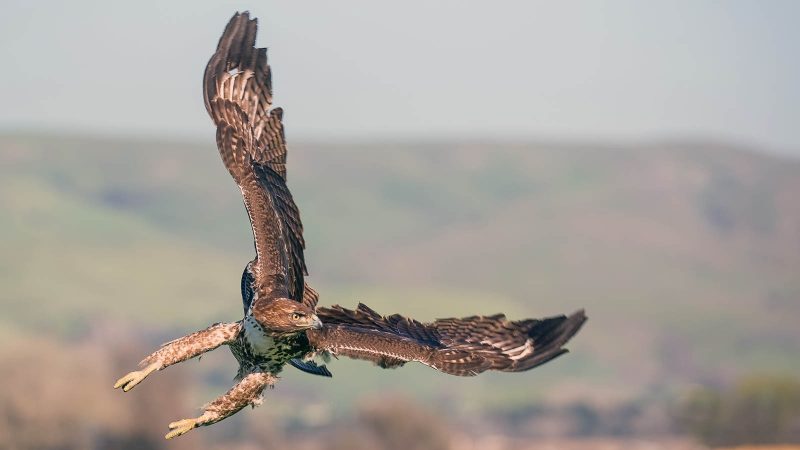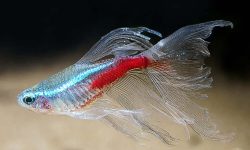Hawks are elite hunters with vision far superior to humans. Their extraordinary eyesight allows them to detect tiny movements from high in the sky, track prey with pinpoint accuracy, and even see ultraviolet light. This article explores the anatomy, capabilities, and evolution behind their super vision, and how it influences science and technology today.

Hawks Have Super Vision
Hawks are not just swift and agile predators—they are nature’s elite visionaries. With eyesight far beyond human capability, these raptors can detect movement and fine detail from astounding distances. Their vision is so advanced that it inspires modern technology, from high-resolution cameras to precision drones. This article explores what makes hawk vision so powerful, from the anatomy of their eyes to the evolutionary advantages that have refined their sight over millions of years.
At the heart of this evolutionary marvel is a powerful combination of anatomical sophistication and environmental adaptation. Over millions of years, hawks have developed advanced visual systems that far exceed the capabilities of most other animals. Their eyes are proportionally larger than those of humans, allowing for a greater surface area to collect light and process visual input. This adaptation, combined with an incredibly dense array of photoreceptor cells, means hawks can detect even the subtlest of movements from incredible distances.
Moreover, hawks’ vision is tailored to suit their predatory lifestyle. Hawks possess dual foveae, specialized regions in the retina that enhance visual resolution. This allows them to simultaneously focus on both stationary and moving targets with incredible precision. This is vital for spotting prey from high altitudes and making lightning-fast decisions during a dive.
Beyond anatomy, behavior and evolution play critical roles. Hawks that could see better had an edge in hunting, territory defense, and avoiding danger. These advantages translated into greater reproductive success, reinforcing the trait over countless generations. This remarkable vision isn’t merely an oddity of nature. It is a refined result of countless generations of natural selection shaping one of the most advanced sensory tools known in the animal kingdom.
Understanding the marvel of hawk vision helps us appreciate the intricate interplay between biology and environment. It’s a striking example of how evolutionary pressures can shape not just survival strategies, but the very organs that define a creature’s perception of the world.
Anatomy of a Hawk’s Eye

Structure and Placement
Hawks possess eyes that are exceptionally large in proportion to the size of their skulls—a trait that immediately signals their status as visually dominant predators. These large eyes are not just for show; they house a highly specialized visual system that supports long-range hunting and acute depth judgment.
Their eyes are positioned frontally on the head, rather than laterally like in many other bird species. This forward-facing orientation grants hawks a significant binocular visual field, meaning both eyes view a large portion of the scene simultaneously. This overlap enables precise depth perception, which is critical when calculating distance, speed, and timing during high-speed pursuits or aerial dives. The fixed position of the eyes within the skull is compensated by a highly flexible neck, allowing hawks to scan their environment effectively without compromising their stereoscopic vision.
Fovea Density and Dual Fovea
Unlike humans, who have a single fovea centralis in each eye—the point of the retina with the highest concentration of cone cells—hawks are equipped with a dual-fovea system in each eye. This evolutionary adaptation gives hawks an unparalleled level of focus and spatial awareness.
One fovea is aligned for forward viewing, allowing hawks to lock onto prey directly ahead with extreme clarity, while the second fovea is angled laterally, enabling them to maintain sharp peripheral vision even while in motion. The presence of two foveae per eye means hawks can simultaneously monitor multiple targets or track prey while maintaining situational awareness of their surroundings. This system gives them the rare ability to spot a rodent in a field while also watching the movements of another bird nearby—without shifting their gaze.
Both foveae are densely packed with photoreceptors, delivering razor-sharp resolution across a broader field of vision than most other animals, making hawks not only accurate hunters but also efficient ones.
Photoreceptor Cells
At the microscopic level, the hawk’s retina is designed for maximum sensitivity and detail recognition. It contains an extraordinary number of cone cells—photoreceptors specialized for detecting color and fine visual detail. Where the human retina contains about 200,000 cones per square millimeter, hawks boast up to 1,000,000 cones/mm², especially concentrated in the foveal regions.
This hyper-dense cone array equips hawks with superior color vision and the ability to detect minute movements, even from hundreds of feet in the air. Their cone distribution also supports rapid image refresh rates, meaning hawks see movement in smoother, more continuous motion than humans—a vital feature for capturing fast-moving prey.
In addition, hawks are likely tetrachromatic, meaning they have four types of cone cells instead of three. This allows them to perceive a wider and more nuanced spectrum of colors, including wavelengths that humans can’t see—laying the groundwork for their ultraviolet sensitivity.
Ultraviolet Vision
Perhaps one of the most fascinating and unique visual adaptations in hawks is their ability to see into the ultraviolet (UV) spectrum of light. This capability opens up an entirely new layer of visual information that is invisible to the human eye. Hawks can perceive light in the 300–400 nanometer range, which allows them to detect visual cues that most predators simply miss.
For example, many small mammals—such as voles and mice—leave urine trails and scent markings that reflect UV light. While these markings are completely invisible to us, they appear as bright, glowing paths to hawks. This means a hawk flying high above a meadow can not only detect movement, but also track hidden or camouflaged prey by following the chemical trails they leave behind.
In addition to aiding in hunting, UV vision may also help hawks with navigation and territorial recognition, as certain environmental features like rocks, feathers, and even plants reflect UV light differently. Some evidence even suggests that UV patterns in plumage play a role in mate selection, allowing hawks to evaluate the health or genetic quality of potential partners by detecting visual markers that are otherwise invisible.
Field of Vision and Depth Perception
Wide Field of View
Hawks benefit from an exceptionally broad field of vision, measuring up to 280 degrees, thanks to the strategic placement of their eyes and the slightly flattened, forward-facing skull anatomy. Unlike many prey birds that rely on lateral eye placement for panoramic vision, hawks balance peripheral awareness with binocular accuracy, giving them the best of both visual strategies.
This wide visual arc allows hawks to scan large areas of terrain from a stationary position or during flight, minimizing the need for constant head movement. It is especially useful when gliding at high altitudes, as they can continuously monitor the landscape below for minute disturbances or signs of motion, such as the rustle of grass or the shadow of a scurrying animal. Even while soaring or circling, hawks can maintain visual contact with both their hunting grounds and potential aerial threats or competitors.
Exceptional Depth Perception
The binocular overlap where both eyes focus on the same object from slightly different angles creates a powerful three-dimensional visual field in the forward direction. This overlap is what gives hawks their exceptional depth perception, a crucial feature for aerial hunters who must make rapid and accurate spatial judgments.
During a high-speed dive, a hawk must evaluate distance, velocity, angle, and trajectory all within fractions of a second. Its precise stereoscopic vision allows it to calculate the location of prey not only in terms of direction but also in terms of spatial depth whether it’s on an open field, perched in a tree, or hiding in uneven terrain.
What sets hawks apart from many other predators is the synchronization of depth perception with motion control. Their brains are fine-tuned to translate visual input into real-time motor responses, enabling them to adjust wing tilt, body angle, and talon position mid-dive with surgical precision. The result is a seamless transition from detection to capture, often executed at speeds exceeding 100 miles per hour (160 km/h) in species like the peregrine falcon hawks’ close relatives.
Furthermore, depth perception is enhanced by the hawk’s ability to fixate on moving objects while in motion themselves. This visual tracking, combined with muscular micro-adjustments in the neck and head, allows hawks to keep their prey in sharp focus despite rapid changes in altitude and direction.
Visual Acuity: The Sharpness of Sight
Resolving Power
Visual acuity is a measure of the eye’s resolving power its ability to distinguish two closely spaced objects as separate rather than blurred together. In hawks, this capability reaches exceptional levels, estimated to be 4 to 8 times greater than that of the average human. While a person with 20/20 vision can clearly resolve detail at 20 feet, a hawk could distinguish that same level of detail from a distance of 80 to 160 feet.
This superior acuity is made possible by several anatomical adaptations. Most notably, hawks possess a densely packed array of cone photoreceptors in their foveal regions particularly in the deep central fovea, which functions like a built-in magnifying lens. These cones are arranged to maximize image resolution and fine detail perception, allowing hawks to detect tiny movements or textures that would be invisible to human eyes.
In practical terms, this means a hawk soaring at over 100 feet (30 meters) in the air can visually identify a mouse scurrying through grass, detect the subtle shimmer of scales on a fish, or even discern the outline of a camouflaged lizard on sunlit rocks. Their high-acuity zone is also larger than in humans, giving them a broad central field of ultra-sharp vision, rather than a narrow “sweet spot.”
Motion Detection
But visual sharpness alone isn’t enough. Hawks are also gifted with exceptional motion sensitivity, enabling them to spot and track fast-moving or erratically moving prey across vast distances and complex landscapes.
Their retinas have an extraordinarily high flicker fusion rate (FFR) the speed at which the eye can process visual changes without them blurring together. For hawks, this rate exceeds 100 Hz, compared to about 60 Hz in humans. This means hawks can perceive rapid movement as a series of discrete, trackable frames, rather than a blur. The result is a kind of slow-motion perception, where high-speed prey movements become visibly traceable.
Moreover, the hawk’s brain is adapted to process visual input with minimal latency, enabling almost instantaneous neural responses. Their optic nerves and visual centers are streamlined for real-time tracking, allowing hawks to respond to visual stimuli even during rapid dives or agile midair maneuvers.
This combination of razor-sharp visual resolution and high-speed motion detection makes hawks elite aerial hunters. A flick of a mouse’s tail or the slightest rustle of leaves is enough to draw a hawk’s attention and once it has locked in visually, few prey escape its targeting system.
Color Perception
Seeing Beyond the Rainbow
Hawks possess a level of color perception that greatly surpasses human abilities, allowing them to interpret a world filled with richer contrasts and hidden visual cues. While the human eye relies on three types of cone cells for color vision, hawks are believed to have four distinct types of cones. This fourth type is sensitive to ultraviolet light, extending their vision into a range of wavelengths that we cannot detect.
This additional visual channel gives hawks access to fine distinctions in color and light that are completely lost on the human eye. What appears as a uniform landscape to us may, through the eyes of a hawk, be a vivid and detailed map of movement, texture, and contrast. These birds are capable of identifying slight changes in feather coloration, fur tone, or environmental shading that would otherwise provide effective camouflage for their prey.
The retina of a hawk is especially adapted for this task. Their cone cells are tightly packed in regions responsible for high focus and clarity. As a result, they not only see a broader spectrum of light but also perceive sharper color boundaries and transitions, even at great distances.
Ultraviolet sensitivity provides one of their most striking hunting advantages. Many small animals leave behind trails or scent markings that reflect ultraviolet light. These signals, invisible to us, appear clearly against the natural background to a hawk in flight, allowing it to trace prey movements or locate their most active zones with remarkable precision.
Color perception also plays a subtle role in hawks’ social and reproductive behavior. Certain feather patterns reflect ultraviolet light, providing visual signals related to age, health, or breeding status. These cues help hawks recognize mates or rivals from afar, enhancing communication in ways that go completely unnoticed by humans.
In essence, a hawk’s color vision is not simply broader. It is an advanced visual language, enabling them to read environmental details, prey trails, and social signals that shape how they navigate and dominate the skies.
Behavioral Advantages of Super Vision
Hunting and Foraging
A hawk’s vision is its most powerful tool for detecting and securing food. From soaring altitudes, hawks can scan vast stretches of terrain with extraordinary clarity, identifying the smallest flicker of movement from potential prey such as rodents, reptiles, or small birds. Their ability to spot targets is not limited to open landscapes. They can also detect prey partially hidden in tall grass, underbrush, or even snow.
Once a target is located, the hawk initiates a high speed dive, often called a stoop. During this rapid descent, which can exceed speeds of 120 miles per hour depending on the species, the hawk continues to rely on its vision to track the target’s movement in real time. It constantly adjusts its body angle, wing shape, and tail position to fine tune its trajectory with astonishing midair precision. This combination of sharp sight and controlled flight mechanics allows hawks to strike with both speed and accuracy, often before the prey even senses danger.
Territorial Surveillance
In addition to hunting, hawks use their visual capabilities to maintain control over large territories. From a perch high in a tree or while circling in a thermal current, a hawk can monitor activity across an expansive range without needing to move frequently. Their ability to detect motion and identify specific species from great distances allows them to track intruders, monitor rival raptors, and observe potential threats such as predators near their nesting zones.
This constant visual awareness helps hawks respond quickly to environmental changes. Whether intercepting another hawk entering their airspace or swooping down to confront a predator near their nest, the ability to see far and respond instantly gives them a powerful advantage in defending their domain.
Navigational Skills
Hawk vision also plays a critical role in their long distance travels. Many hawk species migrate across thousands of miles and rely on a sophisticated visual system to guide them.
They navigate using natural landmarks such as coastlines, mountain ranges, and river valleys. Some species also respond to celestial cues, such as the position of the sun or patterns of stars, to stay oriented during flight. Moreover, hawks are believed to detect polarized light patterns in the sky, which help them determine direction even when cloud cover obscures the sun.
These navigational abilities enable hawks to return to the same nesting grounds year after year with remarkable precision. Their vision is not only a tool for hunting or defense but also a navigation system deeply integrated with the world around them.
Evolutionary Perspective
Natural Selection and Eye Evolution
The extraordinary vision of hawks is not a coincidence but a direct result of natural selection over millions of years. As birds of prey, hawks depend heavily on sight for every critical aspect of survival — hunting, navigation, territory defense, and mating. Those with even slightly sharper eyesight had a clear advantage in spotting prey, avoiding threats, and thriving in complex environments. Over time, these traits became more refined and widespread within the species.
Hawks evolved specialized eye anatomy through selective pressures. Their retinas contain an extremely high density of cone cells that enable ultra detailed vision. Each eye is equipped with two foveae, allowing simultaneous focus on different parts of their visual field. These features didn’t appear all at once — they were favored generation after generation, with individuals possessing better vision passing their genes to the next. This process has led to the development of one of the most advanced visual systems among all land animals.
The evolution of the hawk’s eye is a powerful case study in how specific traits, when essential for survival, become more refined through natural forces. Today, hawks exhibit vision that rivals or surpasses that of any other predator in the sky.
Survival of the Fittest
In the wild, survival depends on more than strength — it requires efficiency, awareness, and precision. For hawks, vision is the cornerstone of these survival tools. The ability to detect movement from hundreds of feet in the air, to spot camouflaged animals hidden among leaves or snow, and to judge distances with pinpoint accuracy, gives hawks an unmistakable edge over both prey and rivals.
Visual acuity directly influences a hawk’s ability to hunt successfully. A bird that can see farther burns less energy searching for food. It can dive at just the right moment, strike at the perfect angle, and retrieve prey with maximum efficiency. This visual advantage allows the hawk to preserve energy, grow stronger, and increase its chances of raising healthy offspring.
The role of sight extends beyond the hunt. Hawks use vision to monitor threats, maintain territory, and engage in mating rituals. Subtle visual signals such as posture, feather quality, and movement are all part of their complex communication system — and can only be fully perceived by hawks with exceptional vision.
Ultimately, hawks with superior eyesight are better equipped to survive and reproduce. This is the essence of survival of the fittest. In hawks, the eye is more than an organ — it is a highly evolved instrument of dominance, shaped by nature to support one of the most efficient and elite predators in the avian world.
Comparison with Other Birds and Predators
Hawks vs Eagles
Although hawks and eagles both belong to the family of birds of prey and share exceptional vision, their hunting styles and physical adaptations differ in important ways. Eagles are typically larger and stronger, often relying on brute power and high vantage points to ambush prey. Hawks, in contrast, are generally smaller, lighter, and more maneuverable in flight. This agility allows hawks to take full advantage of their visual acuity in high speed pursuits, rapid dives, and complex aerial maneuvers.
While an eagle may scan vast areas from a stationary perch or soaring glide, hawks are known for actively weaving through woodlands, meadows, or even urban spaces, exploiting their vision to make real time decisions mid flight. This dynamic use of eyesight gives hawks an edge in precision-based hunting, particularly in dense or fast changing environments.
Hawks vs Owls
Hawks and owls have evolved two radically different visual systems, optimized for diurnal versus nocturnal hunting. Hawks possess vision that is finely tuned for daylight, with color perception, motion detection, and depth estimation that reach peak performance under the sun’s illumination. Their retinas are packed with cone cells, enabling them to track fast moving prey across large open landscapes.
Owls, on the other hand, are masters of the night. Their eyes contain a much higher ratio of rod cells, allowing them to see in near total darkness. Their forward facing eyes give them strong binocular vision, but their large eye size and slow tracking speed reflect an adaptation to stillness and stealth, rather than agility. Where hawks excel in fast, daytime pursuit, owls specialize in silent, calculated attacks under cover of night.
This contrast illustrates how evolution tailors vision to environmental needs, shaping two powerful yet distinct strategies for visual predation.
Hawks vs Humans
Compared to hawks, human vision is limited in both resolution and range. Even the sharpest human eyesight cannot match the detail a hawk can perceive from hundreds of feet above. Hawks have a visual acuity estimated to be four to eight times greater than that of an average person. Where a human might see a blur on the ground, a hawk can distinguish a mouse twitching its whiskers.
Additionally, hawks can perceive parts of the light spectrum that humans cannot, including ultraviolet wavelengths. This allows them to detect patterns invisible to us, such as urine trails or subtle plumage differences in potential mates or rivals. While humans have invented tools like telescopes, binoculars, and drones to extend our vision, hawks come biologically equipped with high performance optical systems that require no enhancement.
The hawk’s eye demonstrates how evolution can outpace even the most advanced human engineering when it comes to real time perception, motion tracking, and detail recognition.
Implications for Science and Technology
Biomimicry in Optics
The incredible structure and function of the hawk’s eye have captured the attention of scientists and engineers aiming to improve optical technology. Hawks possess dual foveae, a dense network of photoreceptor cells, and lens shapes that allow for both wide field awareness and pinpoint sharp focus — features that are now serving as models in biomimicry.
Researchers are analyzing the arrangement of cone cells, focal depth mechanisms, and adaptive muscle control in hawk eyes to enhance everything from high resolution photography to long range telescopic imaging. Advances in camera sensors, autofocus systems, and visual stabilization technology are increasingly drawing on the visual architecture of birds of prey. The goal is to create devices that can track, resolve, and interpret visual data with a level of precision closer to what hawks achieve naturally.
Robotics and Drones
Engineers working in robotics and aerial systems are also looking to hawks for inspiration. Modern drones and autonomous flying vehicles need to process visual information in real time, navigate through cluttered environments, and identify objects with speed and accuracy — challenges that hawks have already mastered through evolution.
By studying hawk vision, researchers are designing visual processing algorithms and tracking systems that mimic how raptors detect movement, lock onto targets, and adjust flight paths dynamically. This has major implications for search and rescue missions, where drones with hawk-like sight could locate missing persons in dense terrain, as well as for surveillance, environmental monitoring, and even agriculture, where visual precision is critical.
Medical and Vision Research
The study of hawk eyes is also contributing to breakthroughs in human ophthalmology and neuroscience. Understanding how hawks process fine detail and motion at high speed may lead to new therapies for vision loss, motion tracking disorders, and age related eye degeneration.
For example, hawks have a unique way of stabilizing their vision during rapid movement — a feature that could inspire vestibular-visual coordination therapies for humans. Their retina structure is also guiding the development of bioinspired retinal implants and synthetic lenses for people with degenerative eye diseases. By decoding the hawk’s visual processing system, scientists hope to build a better understanding of how to repair, enhance, or even replicate human sight.
Conclusion: Nature’s Optical Engineers
Hawks exemplify the peak of visual evolution in the animal kingdom. Their eyes are not just tools for survival but are sophisticated optical systems that rival and surpass even the most advanced man-made technologies. From their dual fovea to ultraviolet perception and from exceptional motion tracking to wide-field vision, hawks are equipped with super vision that makes them formidable predators and awe-inspiring subjects of scientific inquiry. The next time someone says you have “eyes like a hawk,” take it as the highest form of compliment—one backed by science, evolution, and the marvels of nature.






